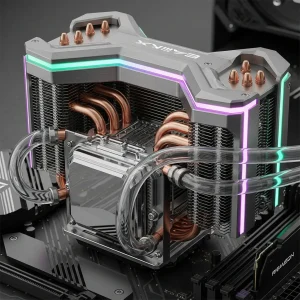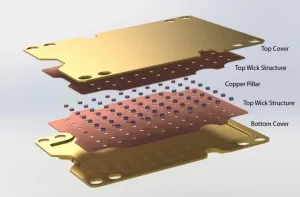Aluminum Heat Sinks: Types, Benefits, and Custom Solutions
Aluminum heat sinks are crucial components for effective thermal management in various industries. Depending on the size, design, and application requirements, different types of aluminum heat sinks are used to achieve optimal cooling. Below, we explore the most common types of aluminum heat sinks, from large models to highly customized solutions.
1.Large Aluminum Heat Sinks
Large aluminum heat sinks are designed to dissipate significant amounts of heat, making them ideal for high-power applications. These are commonly used in industrial machinery, power electronics, and high-performance computing systems. The increased surface area of large aluminum heat sinks enhances their ability to transfer heat away from critical components, preventing overheating and ensuring longevity. These heat sinks are typically produced through extrusion processes, allowing for mass production at a lower cost.
2.Custom Aluminum Heat Sinks
Custom aluminum heat sinks are tailored to meet the specific thermal management needs of unique devices or setups. Whether it’s for limited space, special shapes, or specific cooling requirements, custom solutions ensure maximum heat dissipation efficiency. These heat sinks can be designed using CNC machining, which allows for precise shaping and sizing, providing a perfect fit for custom-built or specialty applications. Industries such as aerospace, medical devices, and high-end electronics often rely on custom solutions for optimal thermal performance.
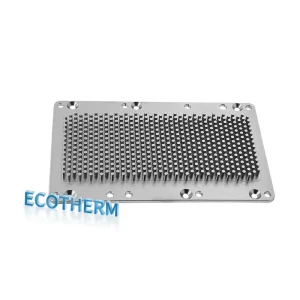
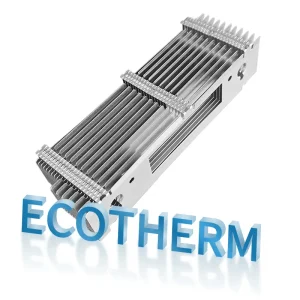
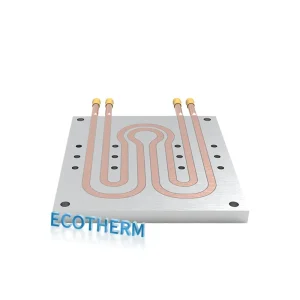
3. CNC Machined Aluminum Heat Sinks
CNC machined aluminum heat sinks are ideal for applications that require precise, complex, or intricate designs. CNC machining allows manufacturers to achieve high precision, which is essential for devices where tight tolerances and exact specifications are critical. These heat sinks are commonly used in industries such as aerospace, medical devices, and telecommunications, where both cooling efficiency and space optimization are essential. The ability to create intricate designs with increased surface area improves overall cooling performance.
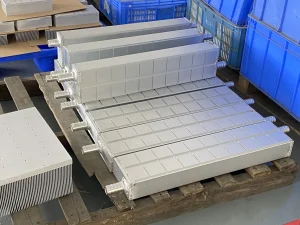
4. Extruded Aluminum Heat Sinks
Extruded aluminum heat sinks are created by forcing aluminum through a die to form long shapes with consistent cross-sections. While not always considered “large,” extruded aluminum heat sinks are versatile and cost-effective. They are commonly used in consumer electronics, automotive components, and smaller-scale industrial applications. The extrusion process allows for flexibility in design, with various profiles and sizes available to fit different thermal management needs.
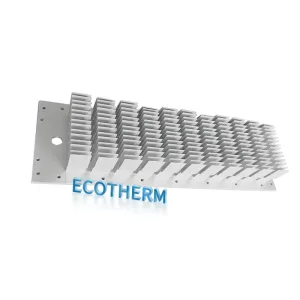
5.Aluminum Heat Sink and Fan Systems
For applications where passive heat dissipation isn’t enough, combining aluminum heat sinks and fan systems is a highly effective solution. The fan increases airflow across the surface of the heat sink, boosting its cooling capacity and making it ideal for high-performance electronics, computers, and power supplies. This combination is particularly useful in devices that generate a significant amount of heat but need active cooling to maintain optimal performance. The use of fans with aluminum heat sinks ensures faster and more efficient heat removal.
6.Specialized Aluminum Heat Sinks for LED Applications
Aluminum heat sinks for LEDs are designed specifically to manage the heat generated by high-intensity LED lights. As LEDs can generate substantial heat in a compact form factor, it’s essential to use efficient heat sinks to prevent thermal damage, extend the lifespan of the LED, and maintain its brightness. Aluminum is the preferred material for LED heat sinks due to its lightweight nature, excellent heat conductivity, and corrosion resistance. These heat sinks are commonly used in indoor and outdoor lighting systems, where performance and durability are essential.

